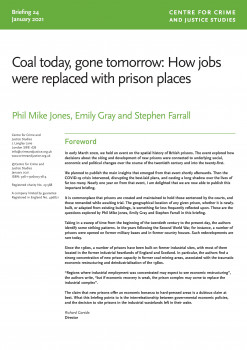Coal today, gone tomorrow: How jobs were replaced by prison places
It is commonplace that prisons are created and maintained to hold those sentenced by the courts, and those remanded while awaiting trial.

The geographical location of any given prison, whether it is newly-built, or adapted from existing buildings, is something far less frequently reflected upon. These are the questions explored by Phil Mike Jones, Emily Gray and Stephen Farrall in this briefing.
Taking in a sweep of time from the beginning of the twentieth century to the present day, the authors identify some striking patterns. In the years following the Second World War, for instance, a number of prisons were opened on former military bases and in former country houses. Such redevelopments are rare today.
Since the 1960s, a number of prisons have been built on former industrial sites, with most of them located in the former industrial heartlands of England and Scotland. In particular, the authors find a strong concentration of new prison capacity in former coal-mining areas, associated with the traumatic economic restructuring and deindustrialisation of the 1980s.
“Regions where industrial employment was concentrated may expect to see economic restructuring”, the authors write, “but if economic recovery is weak, the prison complex may come to replace the industrial complex”.
The claim that new prisons offer an economic bonanza to hard-pressed areas is a dubious claim at best. What this briefing points to is the interreleationship between governmental economic policies, and the decision to site prisons in the industrial wastelands left in their wake.